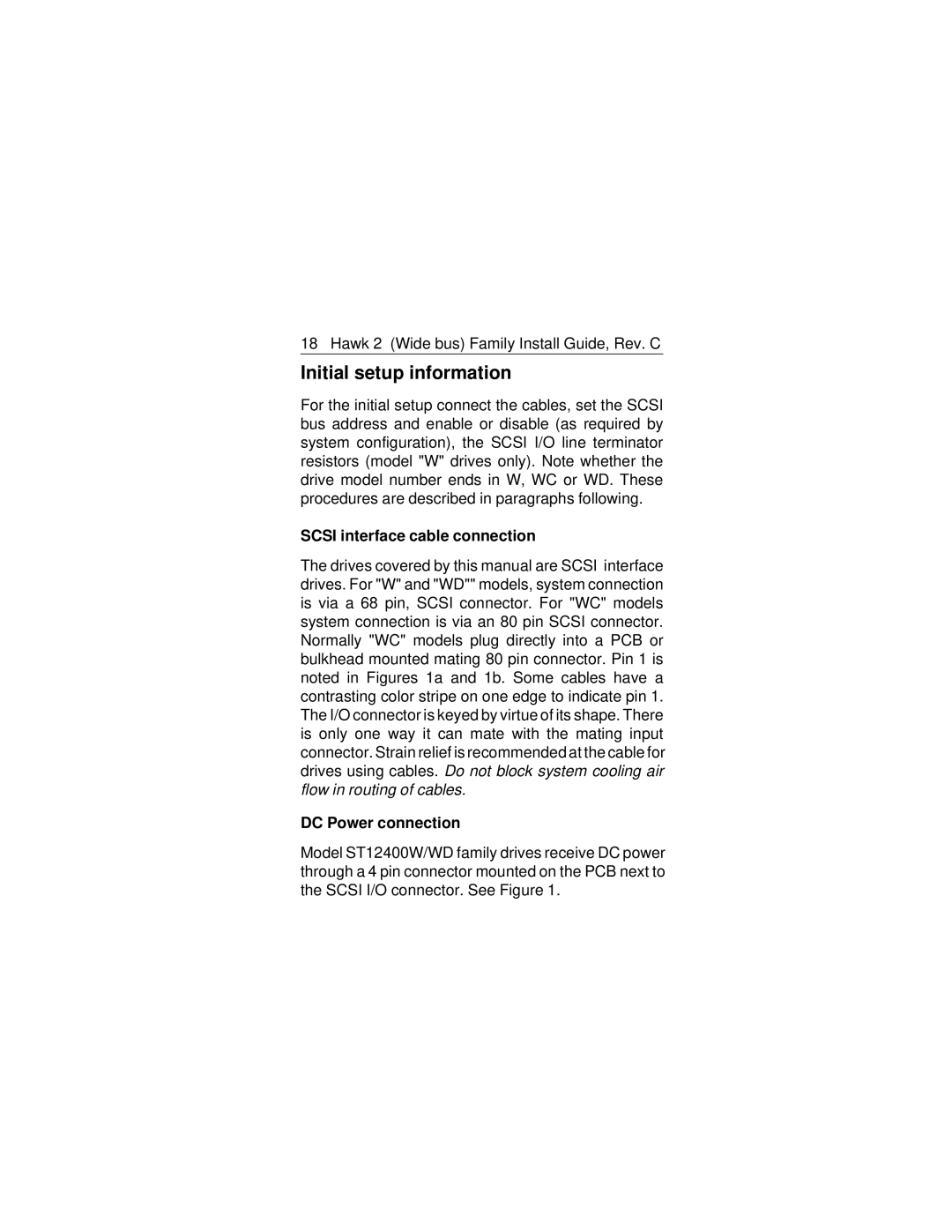ST12400W/WD/WC, ST11900W/WD/WC specifications
The Seagate ST11900W/WD/WC and ST12400W/WD/WC are high-performance disk drive models that deliver substantial storage capabilities for various computing environments. These drives have been specifically designed for enterprise-level applications, enabling users to handle large data sets and demanding workloads with ease.One of the key features of the ST11900W/WD/WC and ST12400W/WD/WC is their impressive storage capacity. The ST11900W offers up to 9.1 GB of storage, while the ST12400W extends this storage to a remarkable 12.4 GB. This level of capacity is particularly beneficial for organizations that require reliable storage solutions for extensive databases, multimedia files, and backup operations.
In terms of performance, both models utilize the SCSI interface, which provides efficient data transfer rates and enhanced performance over traditional IDE interfaces. The drives are optimized for sustained data transfer, thanks to their rotational speeds of 7200 RPM, allowing for faster access to stored information. This feature significantly reduces latency and improves overall system performance, making them suitable for high-demand applications.
The Seagate ST11900W/WD/WC and ST12400W/WD/WC also incorporate advanced technologies such as Automatic Acoustic Management (AAM) for noise optimization, as well as error recovery controls that enhance data integrity and security. These features ensure that the drives operate quietly and efficiently while minimizing risks related to data loss.
Furthermore, these drives support a range of RAID configurations, contributing to their flexibility in various system setups. Whether used in a single drive configuration or as part of a more complex RAID system, users benefit from improved data redundancy and fault tolerance, ensuring that critical data remains protected against hardware failures.
Another notable characteristic is their durability. Designed to withstand the rigors of continuous operation, these drives have robust construction that helps prevent mechanical failure, making them suitable for environments with high demands on reliability and performance.
In summary, the Seagate ST11900W/WD/WC and ST12400W/WD/WC are excellent choices for enterprises looking for reliable, high-capacity storage solutions. With their impressive storage capabilities, performance-enhancing technologies, and advanced features, these drives fulfill the demands of modern computing environments, providing users with the necessary tools to manage their data efficiently.
